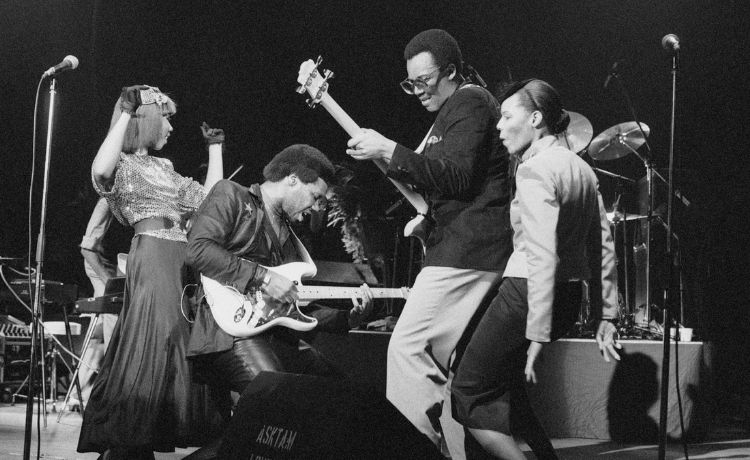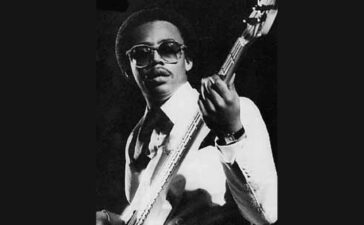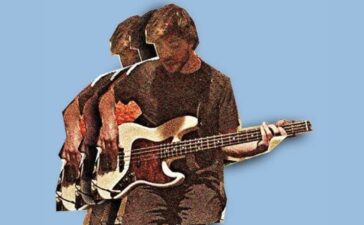The 1979 release of Risqué by Chic marked a pivotal moment in the history of disco and popular music. Chic, led by guitarist Nile Rodgers and bassist Bernard Edwards, had already achieved mainstream success with hits like Le Freak and I Want Your Love. However, Risqué saw the duo pushing boundaries both musically and lyrically, creating an album that would influence not only the disco era but also future genres like hip-hop, pop, and R&B. This article takes a closer look at the creative process behind the making of Risqué, analyzing its production, key tracks, and lasting cultural impact.
1. The Creative Duo: Nile Rodgers and Bernard Edwards
At the core of Chic’s success was the unparalleled musical partnership between Nile Rodgers and Bernard Edwards. Both musicians had deep roots in rhythm and blues, jazz, and funk, bringing these influences into the world of disco. The duo were meticulous in the studio, often spending countless hours perfecting every element of a track. Edwards’ bass playing, with its syncopated rhythms and infectious grooves, combined seamlessly with Rodgers’ innovative guitar riffs, forming the backbone of Chic’s signature sound.
In Risqué, their synergy reached new heights. Rodgers, often credited with the album’s polished production, aimed to elevate disco from simple dance music to a sophisticated art form. Edwards, meanwhile, was responsible for many of the album’s memorable basslines, such as the one featured in Good Times, which became one of the most iconic bass riffs in music history.
2. The Making of Risqué and Its Standout Tracks
Released at the height of disco’s popularity, Risqué encapsulates the opulence and carefree attitude of the late 1970s while also hinting at the social and economic anxieties beneath the surface. The album features tight grooves, lush orchestral arrangements, and lyrical depth that set it apart from many of its contemporaries.
“Good Times”
“Good Times” is the centerpiece of Risqué and one of Chic’s most enduring hits. The track opens with an instantly recognizable bassline that has been widely credited as one of the most influential grooves in popular music. Bernard Edwards’ playing on this track became the foundation of many future hits, most notably The Sugarhill Gang’s Rapper’s Delight, which marked the early days of hip-hop’s rise. Musically, the track blends funk, disco, and jazz, with each instrument working in perfect harmony. The groove is infectious, with Rodgers’ rhythm guitar adding a layer of complexity to the syncopated bassline.
Lyrically, Good Times celebrates the joyous moments of life, but Rodgers and Edwards infuse the song with a touch of irony, reflecting on the fleeting nature of happiness amid the economic struggles of the 1970s. This deeper meaning, combined with the irresistible groove, made Good Times not only a dance anthem but also a subtle social commentary.
“My Forbidden Lover”
This track showcases the duo’s knack for combining rhythmically complex arrangements with catchy pop melodies. My Forbidden Lover features Edwards’ signature tight bass playing, driving the rhythm forward while allowing space for Rodgers’ guitar to interlock perfectly. The track is upbeat and danceable but also contains an emotional depth in its lyrics, dealing with themes of forbidden love and desire.
“My Feet Keep Dancing”
One of the more experimental tracks on the album, My Feet Keep Dancing features an elaborate string arrangement that adds a sense of grandeur to the composition. The orchestration, combined with Edwards’ elastic bassline and Rodgers’ syncopated guitar work, gives the track a dynamic, evolving groove. The use of orchestral instruments in a dance track was innovative for its time and demonstrated the duo’s ambition to elevate the genre.
3. Production Techniques and Studio Innovation
Chic’s approach to producing Risqué was forward-thinking and detail-oriented. Rodgers and Edwards were known for their dedication in the studio, often working with live musicians and incorporating complex arrangements. Unlike many other disco records, which relied heavily on electronic sounds and repetitive beats, Risqué was built on live performances that gave the album an organic feel.
The duo used multi-track recording techniques to layer guitars, bass, percussion, and vocals, resulting in a polished but rich sound. They also integrated orchestral elements, such as strings and brass, which were arranged by string master Gene Orloff. This orchestral backing added a lush, cinematic quality to the tracks without overshadowing the groove-centric core of the music.
Rodgers’ use of rhythm guitar on the album is another highlight. His “chucking” technique, where he strummed muted strings between chord changes, became a defining element of Chic’s sound. This percussive guitar style interlocked with Edwards’ bass, creating grooves that felt intricate yet natural.
4. Cultural and Commercial Impact
When Risqué was released in 1979, Chic was already at the peak of their career, and the album’s success solidified their place in music history. Good Times topped the Billboard Hot 100, becoming one of the defining songs of the disco era. However, the album’s influence extended far beyond the disco movement, which was beginning to decline around the time of Risqué‘s release.
The sampling of Good Times in The Sugarhill Gang’s Rapper’s Delight marked a pivotal moment for the emerging hip-hop genre. It was one of the first major examples of sampling in mainstream music, and the song’s success helped to popularize hip-hop across the world. Today, Good Times is considered one of the most sampled songs in music history, having influenced a diverse array of genres, from rap to electronic dance music.
Beyond its commercial success, Risqué was also critically acclaimed for its artistic ambition. The album is often cited as a key influence on the development of post-disco and dance music in the 1980s and 1990s. Artists like Madonna, David Bowie, and Daft Punk have all cited Nile Rodgers and Chic as major influences on their work.
5. Chic’s Legacy and the Enduring Influence of Risqué
Chic’s Risqué not only marked the high point of their career but also became a symbol of the disco era itself. The album’s mixture of infectious grooves, sophisticated musicianship, and lyrical depth set it apart from other disco records of the time, making it a timeless work that continues to resonate with musicians and fans today.
The basslines on Risqué by Bernard Edwards became a blueprint for bassists across genres. Meanwhile, Nile Rodgers’ guitar work and production techniques paved the way for the sound of pop music in the following decades. The enduring influence of Chic’s music can be heard in everything from the funk revival of the 1990s to the modern electronic dance music of today.
Even as disco faced a backlash in the early 1980s, Chic’s music, especially Risqué, stood the test of time. The duo’s influence remains present in modern pop and dance music, where groove, rhythm, and innovation continue to define success.









